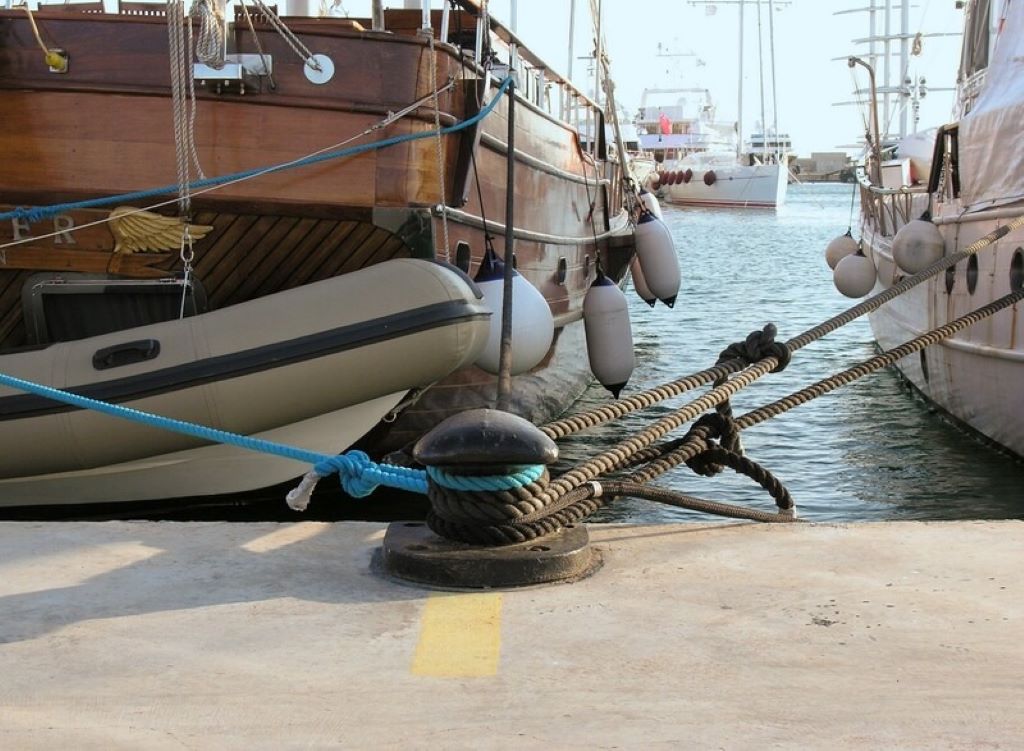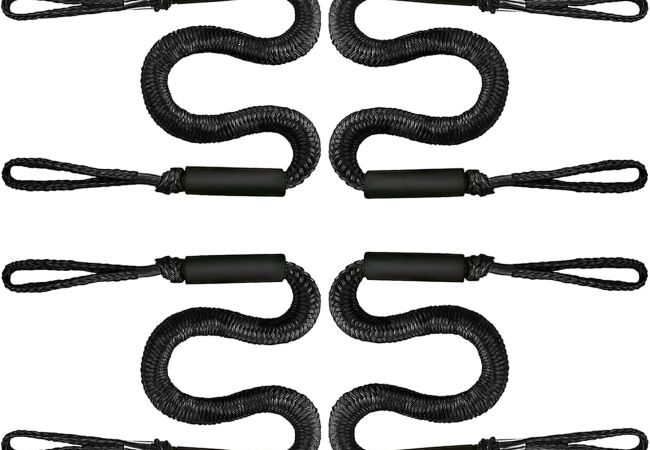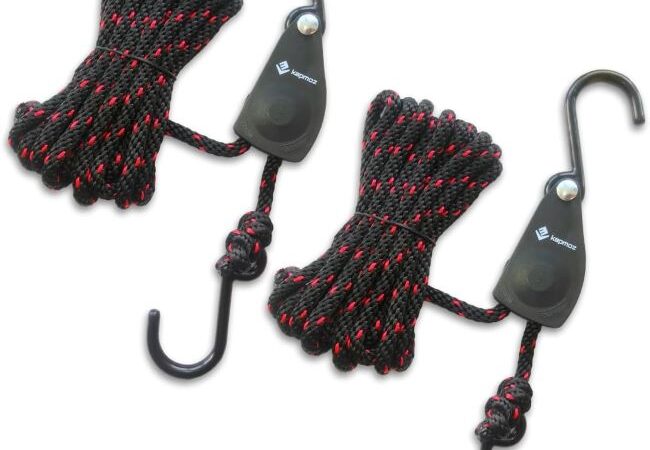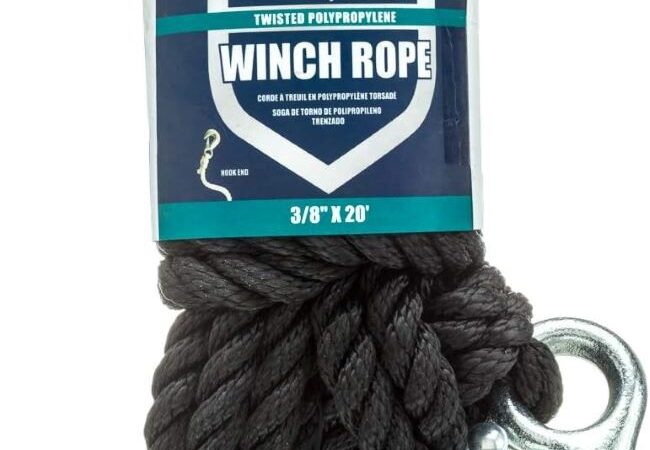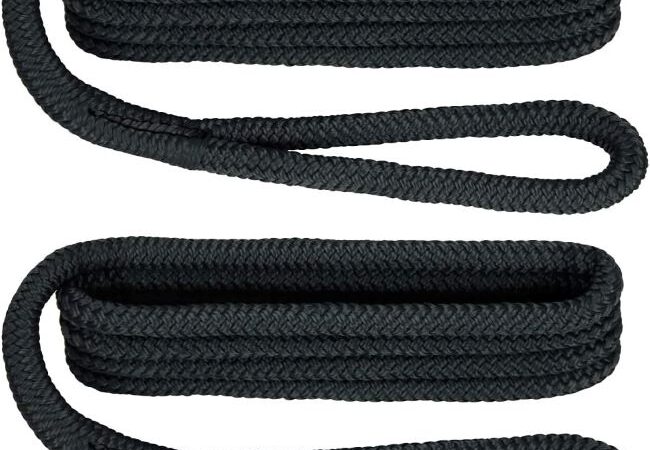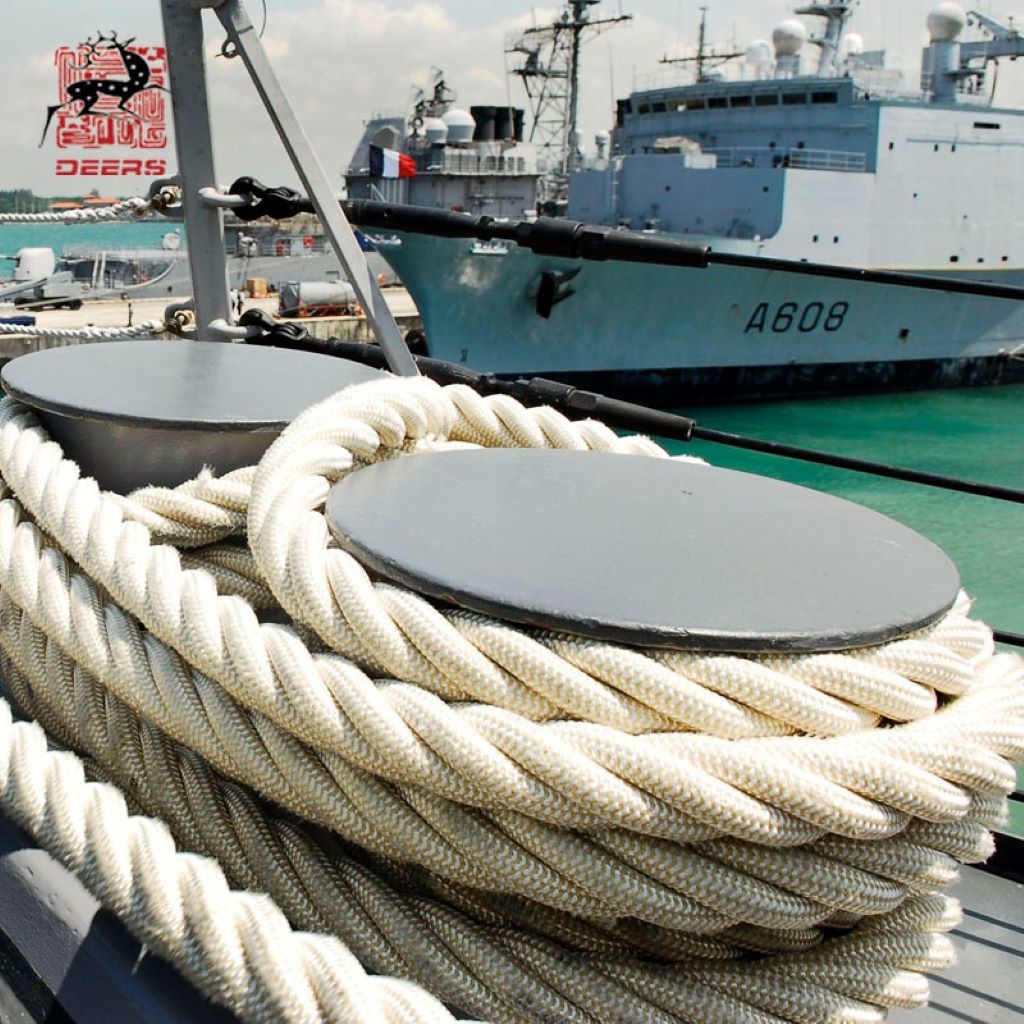
The Unseen Lifeline: What is the Best Rope for Mooring Ships?
Imagine a colossal vessel, weighing tens of thousands of tons, gracefully gliding into port. As it approaches the dock, a delicate ballet begins. Tiny tugboats nudge, powerful thrusters adjust, and then, with surprising swiftness, lines are thrown. These aren’t just any ropes; they are the unseen lifelines, the critical connection that tethers a behemoth to solid ground, preventing it from drifting away, even in the most turbulent conditions.
Contents at a Glance
ToggleBut what exactly are these ropes made of? And more importantly, when the safety of crew, cargo, and the ship itself hangs in the balance, what is the best rope for mooring ships? This isn’t a simple question with a single answer. The world of marine ropes is far more complex and fascinating than you might imagine, evolving constantly with advancements in materials science and engineering.
From the dawn of seafaring, the integrity of mooring lines has been paramount. Ancient mariners relied on natural fibers, enduring their inherent limitations. Today, we stand on the precipice of a new era, with synthetic marvels offering unprecedented strength, durability, and safety. This comprehensive guide will delve deep into the characteristics that define a superior mooring rope, explore the leading contenders in the market, and equip you with the knowledge to understand why certain choices are made for specific vessels and environments.
The Critical Role of Mooring Lines: More Than Just “Ropes”
Before we dissect the different types of ropes, let’s truly appreciate the multifaceted demands placed upon mooring lines. They are not merely static tethers. Mooring ropes are dynamic components of a complex system, constantly responding to:
- Tidal Changes: As the tide rises and falls, the ship’s position relative to the quay changes, putting varying stresses on the lines.
- Wind and Current: Even a gentle breeze or a slight current can exert immense force on a large ship’s hull, trying to push it away from the dock.
- Passing Vessels: The wake from other ships can create significant surge and sway, testing the resilience of the mooring system.
- Cargo Operations: As cargo is loaded or unloaded, the ship’s draft changes, impacting the tension on the lines.
- Human Error and Mechanical Failure: While rare, robust lines can provide a crucial safety net in unforeseen circumstances.
Given these dynamic forces, a good mooring rope must possess a unique combination of attributes: high tensile strength, elasticity, abrasion resistance, UV resistance, and often, specific buoyancy characteristics. Understanding these requirements is the first step in identifying the “best” solution.
Unraveling the Fibers: A Deep Dive into Mooring Rope Materials
Historically, natural fibers like manila, sisal, and hemp were the go-to choices for ship mooring. While biodegradable and cost-effective, they suffered from significant drawbacks: susceptibility to rot, limited strength-to-weight ratio, and poor resistance to environmental degradation.
The 20th century, particularly the latter half, heralded a revolution with the advent of synthetic fibers. These engineered materials have transformed marine operations, offering superior performance across the board. Let’s explore the primary synthetic contenders for mooring applications:
-
Polyamide (Nylon): The Elastic Workhorse
Nylon, specifically polyamide, is arguably the most widely used synthetic fiber for mooring lines due to its exceptional elasticity and high breaking strength.
- Pros:
- Excellent Shock Absorption: Nylon’s stretch (up to 20-25% at break) allows it to absorb sudden shocks and surges, making it ideal for dynamic loads. This “give” prevents abrupt snapping and reduces stress on the ship’s bitts and bollards.
- High Tensile Strength: It boasts impressive strength, making it suitable for large vessels.
- Good Abrasion Resistance: Nylon holds up well against chafing, a common issue in mooring operations.
- Relatively Affordable: Compared to some newer, more specialized synthetics, nylon offers a good balance of performance and cost.
- Cons:
- Water Absorption: Nylon absorbs water, which can lead to a slight loss of strength (around 10-15%) when wet and can also make the rope heavier.
- UV Degradation: Prolonged exposure to sunlight can degrade nylon over time, though modern ropes often incorporate UV stabilizers.
- Stiffness when Wet: Can become somewhat stiff and harder to handle when thoroughly soaked.
Nylon is often chosen for its ability to “give” and absorb energy, making it a reliable choice for general mooring applications, especially where shock loading is a concern.
-
Polyester (PET): The Low-Stretch Powerhouse
Polyester is another prominent player in the mooring rope arena, often chosen for its low stretch characteristics and excellent resistance to environmental factors.
- Pros:
- Low Stretch: Unlike nylon, polyester has minimal stretch (around 10-15% at break), providing a more rigid and predictable hold. This is particularly advantageous in situations where precise positioning is critical or where minimizing ship movement is paramount.
- Excellent UV Resistance: Polyester stands up remarkably well to prolonged sun exposure, making it highly durable in outdoor marine environments.
- High Strength (Wet and Dry): Its strength is largely unaffected by water absorption.
- Good Abrasion Resistance: Similar to nylon, polyester offers good resistance to wear and tear.
- Chemical Resistance: Resists many common chemicals, oils, and fuels.
- Cons:
- Less Shock Absorption: Its low stretch means it absorbs less shock than nylon, which can transfer more stress to mooring hardware during sudden movements.
- Heavier than Nylon: Generally, polyester ropes are slightly heavier than their nylon counterparts of equivalent strength.
Polyester is frequently favored for mooring lines where minimal elongation is desired, such as alongside berths in sheltered waters or for spring lines that help control fore and aft movement.
-
Polypropylene (PP): The Buoyant Lightweight
Polypropylene is a lightweight and buoyant synthetic fiber, making it easily distinguishable and manageable in water.
- Pros:
- Excellent Buoyancy: It floats, making it easy to retrieve from the water and reducing the risk of entanglement with propellers.
- Lightweight: Easier to handle for deck crew, reducing fatigue and improving operational efficiency.
- Good Chemical Resistance: Resists a wide range of chemicals.
- Relatively Inexpensive: Generally one of the more cost-effective synthetic options.
- Cons:
- Lower Strength: Significantly weaker than nylon or polyester for a given diameter.
- Poor UV Resistance: Highly susceptible to degradation from sunlight, requiring frequent inspection and replacement, or the use of UV-stabilized versions.
- Poor Abrasion Resistance: Wears out faster than nylon or polyester when subjected to friction.
- Creep: Can exhibit “creep” under sustained load, meaning it slowly elongates over time.
Due to its lower strength and poor UV resistance, polypropylene is less common for primary mooring lines on large commercial vessels, though it sees use in lighter applications like messenger lines, heaving lines, or temporary moorings where its buoyancy is a major advantage.
-
High Modulus Polyethylene (HMPE) / Ultra-High Molecular Weight Polyethylene (UHMPE) – e.g., Dyneema®, Spectra®: The Super Fibers
This category represents the cutting edge of synthetic rope technology, offering unprecedented strength-to-weight ratios. Brands like Dyneema® and Spectra® are synonymous with HMPE/UHMPE ropes.
- Pros:
- Extremely High Strength: HMPE ropes are often touted as being 7-15 times stronger than steel wire rope of the same weight, making them incredibly powerful for their size. This allows for significantly smaller diameter ropes, saving space and weight on deck.
- Extremely Low Stretch: Even lower than polyester, providing exceptional stability and minimal ship movement.
- Excellent Abrasion Resistance: Highly resistant to wear and tear.
- Excellent UV Resistance: Exceptional durability in harsh sunlight.
- Floats: Another significant advantage, aiding handling and preventing propeller entanglement.
- No Water Absorption: Retains strength perfectly when wet.
- Cons:
- High Cost: HMPE ropes are significantly more expensive than traditional synthetics.
- Slippery Surface: Can be more challenging to splice or knot securely without specialized techniques due to its smooth, slippery surface.
- Heat Sensitivity: Can be susceptible to damage from localized heat generation (e.g., friction on winches or bitts).
HMPE ropes are increasingly being adopted for large vessels, particularly container ships, LNG carriers, and cruise ships, where their superior strength, low weight, and minimal stretch offer substantial operational benefits and safety enhancements. They are often used as “tail” lines connected to traditional synthetic ropes to provide a short, high-strength connection to the ship’s winches.
Factors Beyond Fiber Type: The “Best” is Contextual
While the fiber material is paramount, several other factors contribute to determining the “best” rope for a given mooring application:
- Rope Construction:
- Braided: Often stronger and more stable, less prone to kinking. Double-braided ropes (core within a cover) are popular for their strength, abrasion resistance, and ease of handling.
- Twisted (Laid): Traditional construction, can be more susceptible to kinking and hockling.
- Diameter and Length: These are determined by the ship’s size, displacement, and the typical mooring conditions. Naval architects and marine engineers specify these based on regulatory requirements and operational parameters.
- Operating Environment:
- Temperature Extremes: Some fibers perform better in very cold or very hot conditions.
- Exposure to Chemicals/Oils: Crucial for tankers or vessels operating in polluted waters.
- UV Exposure: Especially important for ropes stored on deck in sunny climates.
- Maintenance and Inspection: Even the best rope requires regular inspection for wear, chafe, and degradation. Proper handling and storage significantly extend a rope’s lifespan.
- Regulatory Compliance: Mooring ropes must meet international standards and classification society rules (e.g., DNV, Lloyd’s Register, ABS).
- Budget: While safety should always be the priority, cost-effectiveness plays a role, especially for fleet-wide procurement.
So, What Is the Best Rope for Mooring Ships?
There’s no single “best” rope that fits every scenario. The optimal choice is always a careful balance of operational requirements, safety considerations, environmental factors, and budget.
- For general-purpose mooring where shock absorption is critical and cost is a factor: Nylon remains a strong contender. Its elasticity makes it forgiving and reduces stress on mooring equipment.
- For applications requiring minimal stretch and high UV resistance, especially in sheltered waters: Polyester is an excellent choice, providing a stable and durable connection.
- For high-performance applications on large, modern vessels where maximum strength-to-weight ratio and minimal elasticity are paramount, despite the higher cost: HMPE (Dyneema®, Spectra®) is rapidly becoming the gold standard. Its revolutionary strength and low weight offer significant operational advantages and enhance safety margins.
- For temporary lines, messenger lines, or where buoyancy is the primary concern, and lower strength is acceptable: Polypropylene fills a niche.
Often, a combination of these materials is used within a ship’s mooring system. For example, a vessel might use HMPE tails attached to conventional polyester or nylon mooring lines, leveraging the best characteristics of each material for specific parts of the mooring operation.
Ultimately, the decision rests with shipowners, operators, and their technical teams, in consultation with naval architects and rope manufacturers. It involves a thorough risk assessment and an understanding of the specific demands of the vessel and its typical operating ports.
Safeguarding the Future: Innovation and Sustainability
The marine rope industry is continuously innovating, striving for even stronger, more durable, and increasingly sustainable solutions. Research into bio-based synthetic fibers and advanced recycling methods for existing marine ropes is ongoing, aiming to reduce the environmental footprint of these essential tools. As technology advances, we can expect to see even more specialized ropes emerge, further enhancing the safety and efficiency of global shipping.
Secure Your Vessel, Secure Your Future: Choose Wisely
Choosing the right mooring rope is not merely a purchasing decision; it’s an investment in safety, operational efficiency, and the longevity of a vessel. Understanding the nuances of each material, its strengths, and its limitations is crucial for maritime professionals.
Take the first step towards optimizing your vessel’s mooring system. Consult with reputable marine rope suppliers and experts today to determine the ideal mooring rope solution for your specific needs, ensuring your ship remains a steadfast and secure presence in any port, anywhere in the world.
Read More:

